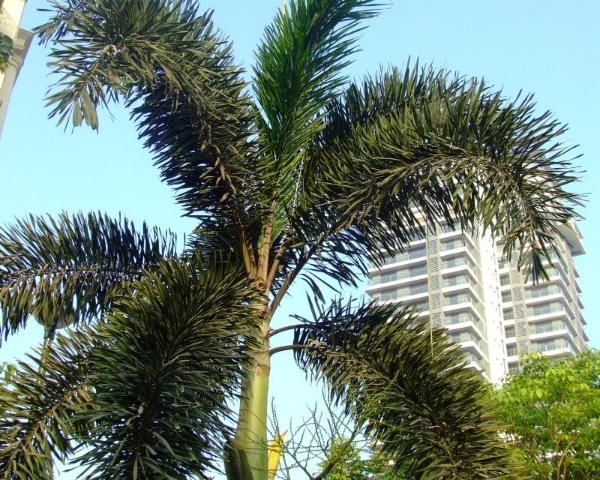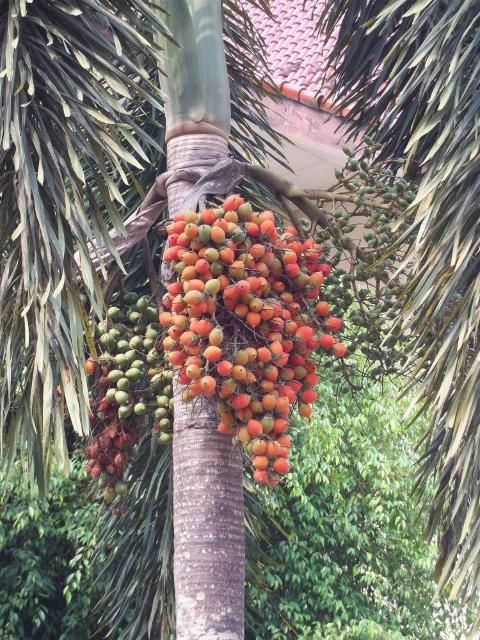Family
Arecaceae, palm family.
Genus
Wodyetia is the Latin term for "Wodyeti" and is the surname of an Australian aboriginal man who was lauded as being the last of his kind to be versed in the plants and animals that occur in the area of Queensland where he was from.
Species
The species name bifurcata means "twice divided," alluding to how fibers within the fruit of this palm are arranged.
Common Name
Foxtail Palm
The common name is in reference to the fronds' appearance, which some people think resemble the bushy tail of a fox.
Description
This palm is endemic to the scrublands of the rocky northeastern peninsula of Australia. In the United States, it survives best where temperatures do not fall below 30°F. The foxtail palm can reach heights of 30 feet, growing fast in full sun, but the plant is tolerant of both sunny and shady conditions. The pinnately compound leaves or fronds can reach lengths of 8 to 10 feet and are attached to a petiole or stem that is about 6 to 12 inches long. The dark green leaflets are each 1/2 foot long, grow whorled around the rachis, and split into segments at the tips. The trunk is light gray to almost white, is somewhat enlarged mid-length, and has dark leaf base scars encircling it. On top of the trunk sits a pale to blue-green, smooth crownshaft, which is the part of the palm where its leaves emerge. The stem's swollen base becomes slender towards the top, and, when mature, accounts for as much as 3 feet of the palm's total height. The inflorescence occurs just below the crownshaft, is heavily branched, and bears white male and female flowers. Fruits are 2 inches long, egg shaped, and orange to red when ripe.

Credit: Shubhada Nikharge, CC BY-NC-SA 2.0

Credit: CANTIQ AND UNIQUE, CC BY-NC-SA 2.0
Applications
Horticultural
Many people like the foxtail palm because it grows relatively fast and its bushy fronds make it look quite different from many other palms on the market. Its resemblance to royal palm and similar aesthetic value also make it a desirable landscape specimen. In addition, this palm can grow well indoors as a potted plant if given the proper soil, light, and space. Foxtail palm prefers a well-drained soil with a slightly acidic pH. This palm is drought tolerant, but it exhibits the best growth when ample water is applied at its base. Watering from above can encourage leaf spot fungus to develop or can aggravate this fungus if it is already present. The recent high demand for this palm as a landscape plant has endangered its survival in its native range in Australia, since poachers harvest seed from protected areas. However, whether growing in its native range or transplanted elsewhere, each palm has the ability to produce productive and fertile seed, making the illegal harvest of foxtail palms in their native range unnecessary.
References
Floridata.com. 1999. Wodyetia bifurcata, Retrieved from http://www.floridata.com/ref/W/wody_bif.cfm
Meerow, A. W. 2004. Betrock's guide to landscape palms (9th ed.). Hollywood, FL: Betrock Information Systems.
Riffle, R. L., and P. Craft. 2003. An encyclopedia of cultivated palms. Portland, OR: Timber Press, Inc.